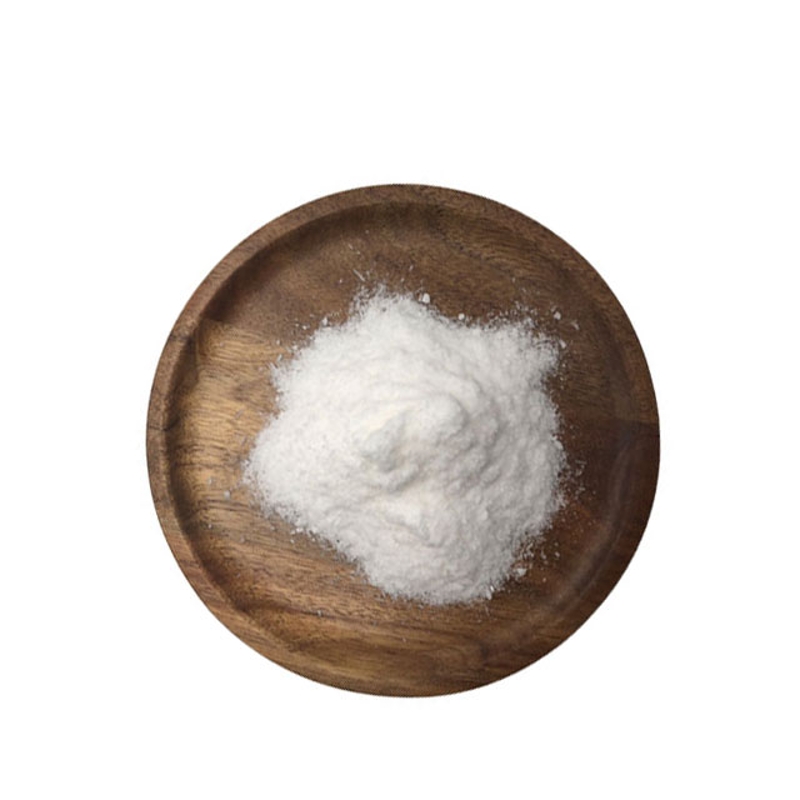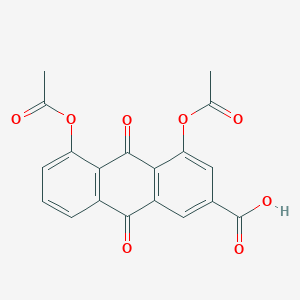-
Categories
-
Pharmaceutical Intermediates
-
Active Pharmaceutical Ingredients
-
Food Additives
- Industrial Coatings
- Agrochemicals
- Dyes and Pigments
- Surfactant
- Flavors and Fragrances
- Chemical Reagents
- Catalyst and Auxiliary
- Natural Products
- Inorganic Chemistry
-
Organic Chemistry
-
Biochemical Engineering
- Analytical Chemistry
- Cosmetic Ingredient
-
Pharmaceutical Intermediates
Promotion
ECHEMI Mall
Wholesale
Weekly Price
Exhibition
News
-
Trade Service
It is only for medical professionals to read and refer to these skin manifestations.
Be careful with kidney disease! In many systemic diseases, the skin behaves like a window, and the surface of the body provides us with ideas and ways to study the pathological changes of internal organs
.
The skin and the kidneys are the two major organs of the human body, which seem to perform their duties but are connected to each other
.
This article will summarize several groups of diseases that clinically take skin lesions as the main manifestation and involve kidney damage, among which the skin manifestations of autoimmune diseases are the main ones
.
Understanding these diseases helps physicians prevent kidney damage and identify systemic diseases clinically
.
1 When these skin manifestations occur, be wary of kidney damage in advance.
Autoimmune/rheumatic diseases ■ Approximately 50% of SLE patients with SLE will have kidney involvement, which is an important cause of complications and death in patients [1]
.
Urinalysis, quantitative proteinuria, and glomerular filtration rate (GFR) regular screening for lupus nephritis is an important part of the management of SLE patients
.
Patients may have several types of glomerulonephritis, and kidney biopsy can help determine the type and extent of kidney involvement
.
The clinical manifestations of lupus nephritis are very different.
Mild cases have asymptomatic hematuria and/or proteinuria, and severe cases have nephrotic syndrome and rapidly progressive glomerulonephritis with loss of renal function [2]
.
Figure 1 SLE facial butterfly plaque ■ Systemic sclerosis (SSc) renal involvement is very common in patients with SSc, but most of them are independent of SSc, such as mild urine protein, elevated blood creatinine, and hypertensive nephropathy.
Does not progress
.
What needs to be vigilant is the scleroderma renal crisis (SRC), which is the most serious renal manifestation, which mainly occurs in diffuse skin type SSc, which is rare in localized skin type
.
■ ANCA-associated vasculitis (AAV) More than half of AAV patients with granulomatous vasculitis (GPA) or microscopic polyangiitis (MPA) have skin manifestations.
The most common skin lesion is lower limb purpura, which may be accompanied by focal necrosis and Ulcer formation
.
Skin involvement is also one of the most common features of eosinophilic granulomatous vasculitis (EGPA) vasculitis [3]
.
The manifestations of glomerulonephritis in AAV are similar to those of glomerulonephritis caused by other reasons, including: asymptomatic hematuria; serum creatinine elevation within a few days or weeks, accompanied by hematuria and cell casts; varying degrees Proteinuria; rapidly progressive glomerulonephritis [4]
.
■ Compared with other types of vasculitis, Behcet's disease is rare in kidney disease, and severe kidney disease is rare
.
Patients with kidney disease may have proteinuria, hematuria, or mild renal insufficiency, and a few may also progress to renal failure
.
■ Polyarteritis nodosa (PAN) The skin manifestations of PAN may include tender erythematous nodules, purpura, livelihood reticularis, ulcers and blisters
.
Histopathology can be manifested as erythema nodosa or vasculitis nodosa [5]
.
The kidney is the most commonly affected organ of PAN, and the clinical manifestations are mainly renal insufficiency and hypertension; ruptured renal aneurysm can cause perinephric hematoma; patients with severe vasculitis can develop multifocal renal infarction
.
The lumen stenosis of inflammatory arteries can cause glomerular ischemia, but it will not cause inflammation or necrosis.
The urine routine of PAN usually only shows a small amount of urine protein, which cannot reach the level of kidney disease [6]
.
Patients may have mild hematuria, but usually do not have red blood cell casts (red cell casts suggest glomerular inflammatory lesions)
.
Patients with red blood cell casts should consider neutrophil cytoplasmic antibody (ANCA)-related vasculitis or SLE
.
two.
Other diseases ■ Henoch-Schonlein purpura Henoch-Schonlein purpura is the most common disease of kidney damage in clinical dermatology.
The histological manifestations of kidney are the same as IgA nephropathy[7], which manifests as nephrotic syndrome, acute kidney injury and hypertension.
In adult patients The report rate of end-stage renal disease is 10%-30%
.
Figure 2 Picture of Henoch-Schonlein purpura ■ Systemic amyloidosis Systemic amyloidosis Kidney involvement can occur in immunoglobulin light chain amyloidosis (AL), secondary amyloidosis (AA), and can also occur in some genetics In sexual amyloidosis
.
The clinical manifestations of renal amyloidosis vary with the location and degree of involvement
.
The most common clinical manifestations of AL and AA amyloidosis are large amounts of proteinuria, which is related to the deposition of glomerulus; patients with renal vascular deposition may manifest as slowly progressing chronic kidney disease (CKD) with minimal proteinuria or No proteinuria
.
■ The most common kidney involvement in patients with sarcoidosis sarcoidosis is caused by abnormal calcium metabolism, which manifests as hypercalcemia, nephrocalcinosis and kidney stones.
If not actively treated, nephrocalcinosis can lead to chronic renal failure and End-stage renal disease [9]
.
■ Drug eruptions Drug eruptions involving the kidneys are mainly systemic symptom syndrome (DRESS) [10]
.
When the kidney is the target organ of DRESS, the clinical manifestations are creatinine> 150% of the baseline level and proteinuria or hematuria
.
Existing evidence shows that among a series of drugs that induce DRESS, allopurinol is the most commonly involved in the kidneys, which manifests as acute interstitial nephritis
.
Summary: 1.
Skin lesions and nephropathy are related in many ways, and the pathological mechanisms of some diseases still need to be further understood by scientific research
.
2.
Skin manifestations are a window of systemic diseases.
In daily clinical work, we must consciously investigate, correct understanding and diagnosis will help early prevention and treatment, and improve the prognosis of patients
.
At the same time, multidisciplinary collaboration is needed to develop personalized diagnosis and treatment plans for patients
.
References: [1] SugiyamaM,WadaY,KanazawaN,etal.
Across-section alanalys is of clinico pathologic similarities and differences between Henoch-Schonle in purpurane phritisandIg Anephropathy[J].
PLoSOne,2020,15(4)e0232194.
[2] Audemard-VergerA,PilleboutE,GuillevinL,etal.
IgAvasculitis(Henoch-Shonle in purpura in adults:Diagnosti candthe rapeuti caspects [J].
Autoimmun Rev, 2015, 14(7)579-585.
[3] PagnouxC,SerorR,HenegarC, etal.
Clinicalfe atures and out comes in 348 patients with polyarterit is no dosa:as yste maticret rospective study of patients diagnosed between 1963 and2005 and enter edin tot he French Vasculitis Study Group Database[J].
ArthritisRheum,2010,62(2): 616-626.
[4]Hernández-RodríguezJ,AlbaMA,Prieto-GonzálezS,etal.
Diagnosis and classification of polyart eritisn odosa[J].
JAutoimmun,2014,48-49:84-89.
[5] MarzanoAV,Raimondo MG,BertiE ,etal.
Cut an eousmani festations of ANCA-associated smal lvessel svasculitis[J].
ClinRevAllergyImmunol,2017,53(3)428-438.
[6]PlumbLA,OniL,MarksSD,etal.
Paediatricanti-neutrophilcy toplasmi cantibody (ANCA)- associated vasculitis: an update onrenal management[J].
PediatrNephrol,2018,33(1): 25-39.
[7]DanilaMI,PonsEstelGJ,ZhangJ,etal.
Renaldamage is the most important predictor of mortality within the damage index :data from LUMINALXIV ,amultiethnic UScohort[J].
Rheumatology(Oxford),2009,48(5)542-545.
[8]ThongB,OlsenNJ.
Systemic lupusery the matos usdiagno sisandmanage ment[J].
Rheumatol ogy(Oxford),2017,56(suppl_1) :I3-i13.
[9]CorneliHM.
DRESSsyndrome:Drugreaction with eosinophilia and systemic symptoms [J].
Pediat rEmergCare,2017,33(7):499-502[10]RobertsSD,MirowskiGW,WilkesD,etal.
Sarcoidosis.
PartⅡ: extrapulmonaryandsystem icmanife stations[J].
JAmAcadDer-matol,2004,51(4): 628-630.
Source: Medical Nephropathy Channel Author: Cindy Reviewer: Professor Li Qing Editor: Wu Ka with copyright declaration It is accurate and reliable, but it does not make any promises or guarantees on the timeliness of the published content, as well as the accuracy and completeness of the cited materials (if any), and does not assume that the content is out of date and the cited materials may be inconsistent.
Any liability arising from accuracy or incompleteness
.
Relevant parties are requested to check separately when adopting or using this as a basis for decision-making
.







